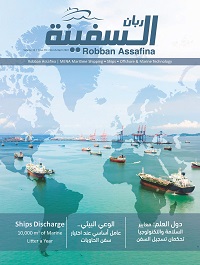EMSA: Key tips for the safe carriage of AFVs in RO-RO spaces
The main reasons behind the topic of alternative fuel vehicles (AFVs) becoming a serious safety concern are the enormous growth of the AFVs fleet, the potential fire risks of these vehicles and a high uncertainty on the associated fire characteristics, EMSA notes and issued in response a guide providing recommendations for the safe carriage of AFVs onboard ships.
In the guide, EMSA highlights that risk assessment should be conducted for each ship to ensure that risks arising from the carriage of the AFVs that might affect persons onboard, the environment, the safety of the ship are addressed.
These risks should be managed within the framework of existing requirements in the ISM code. Consideration should be given to the hazards arising from transporting AFVs and all related operations should be risk evaluated. The result of the risk assessment should be a ship specific procedure to be carried onboard for the prevention and mitigation of fire incidents involving AFVs.

AFVs should only be allowed onboard if they comply with the provisions of the IMDG Code. Particular attention should be paid to the following: if there is suspicion that the battery of EVs is damaged or their battery is defective, they should only be allowed if their battery is removed; are free from any leakages of fuel/gases
According to the IMDG Code, 2.9.2, Electric vehicles shall be classified as “UN3171 BATTERY POWERED VEHICLE”. Similarly, the remaining AFVs shall be typically classified as 3166 VEHICLE, FUEL CELL, FLAMMABLE GAS POWERED or 3166 VEHICLE, FUEL CELL, FLAMMABLE LIQUID POWERED.
Charging onboard ro-ro passenger ships should not be allowed unless the ship operator conducts a comprehensive risk assessment and approves and implements the relevant risk control measures.
The risk assessment should include but not be limited to the following topics:
- Electrical protection class: in addition to current requirements on IP protection, resistance to salty environments should be considered and tested, especially if installed in a non-enclosed deck. A lockable cover on the charging station’s connector/plug to prevent unauthorized use should be considered for charging stations with a detachable cable.
- Explosion protection: the installation of a charging station including the charging cable should be considered at a height of more than 45 cm from the deck.
- Vibrations: the charging station should be designed to have at least the same resistance as required for all other electrical installations onboard.
- Electromagnetic compatibility: the electrical installation must not be disturbed by electrical devices within the environment.
- Voltage and frequency deviations: All electrical equipment on board must be designed to operate without interference coming from voltage and frequency deviations during normal operation.
- Network parameters: While the transmission voltage ashore is usually at 400 V and 50 Hz most vessels are operating at 440 V and 60 Hz. A charging station should be able to function according to these input values. This is especially pertinent if the conversion of voltage and frequency is done within the charging station and not by the car.
- Power grid: grounding, distribution; an earthed network should be created by using an isolating transformer. The transformer must be adapted to the performance parameters of the charging station.
- Cable: The cable should be firmly connected to the charging station in a way that no driver can use his own cables. If the cable is getting tight (e.g. movement of vehicles in heavy weather) the connection should be disconnected (emergency disconnection).
Fire suppression and extinguishment
In general, the activation of the fixed fire-extinguishing system should be the preferred response for a fully developed fire. However, under specific circumstances, a first response through manual means may be effective.
The response procedures should include, but not be limited to, the following:
- mitigation actions for all specific foreseeable hazards caused by a fire involving AFVs;
- the number, the type and capacity of fixed and portable equipment (local water cooling etc) of the fire-fighting team;
- the appropriate smoke strategy to ensure the operation of the fire-fighting team and avoiding a fire growth, also taking into account the type of ro-ro space;
- a strategy to contain the fire;
- fire-fighting team strategy, taking into consideration the possibility of entering a space with toxic gases (e.g. HF in the case of EVs), procedures for decontamination of firefighters and handling of contaminated clothes and equipment after the operation;
- post fire routine, to prevent reignition;
- the activation and operation of fixed fire-fighting system, in combination with appropriate ventilation system operation.
| Read Here | |
 |
|







































